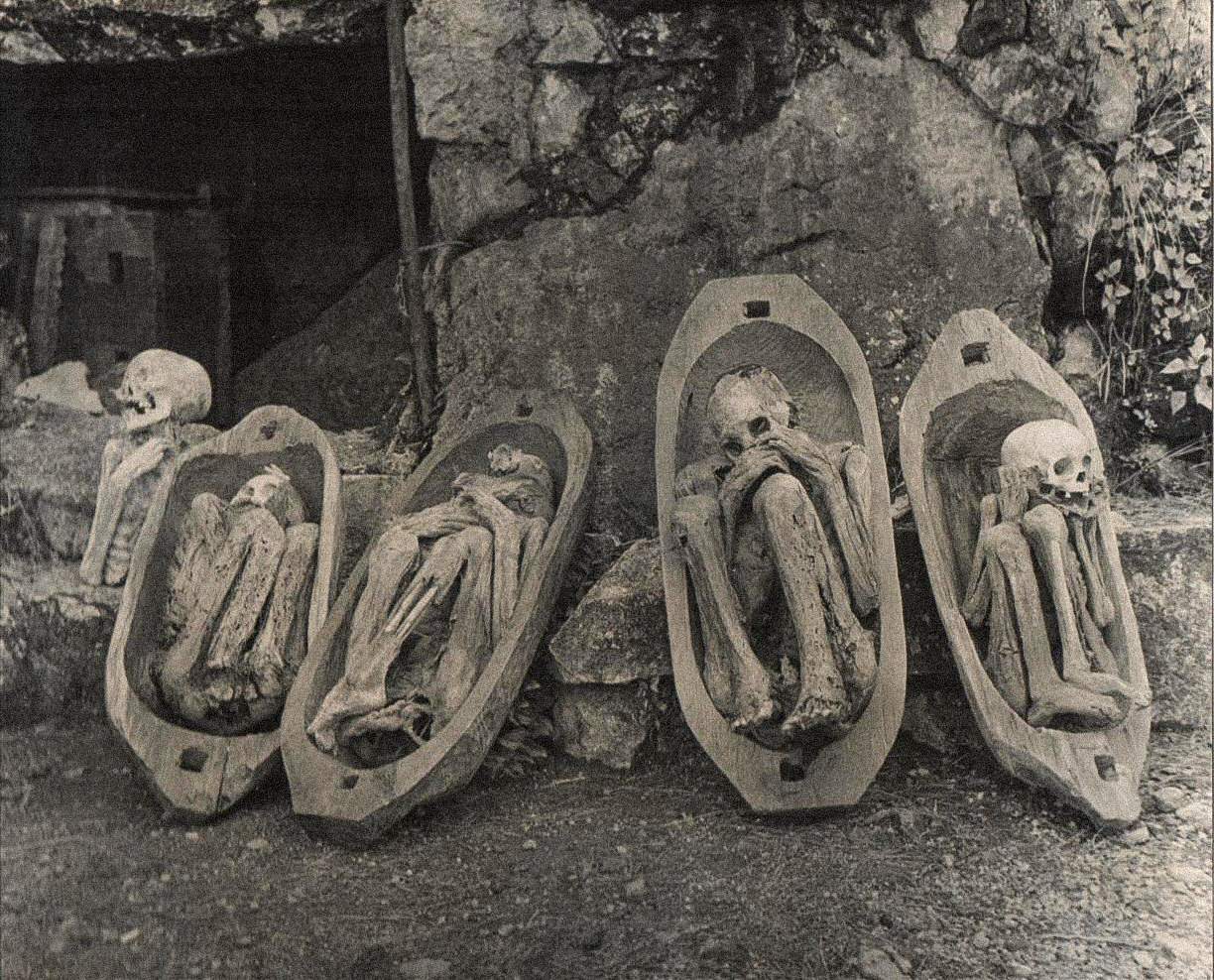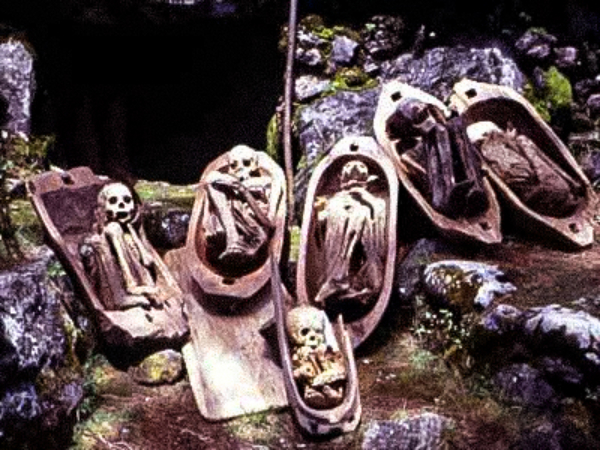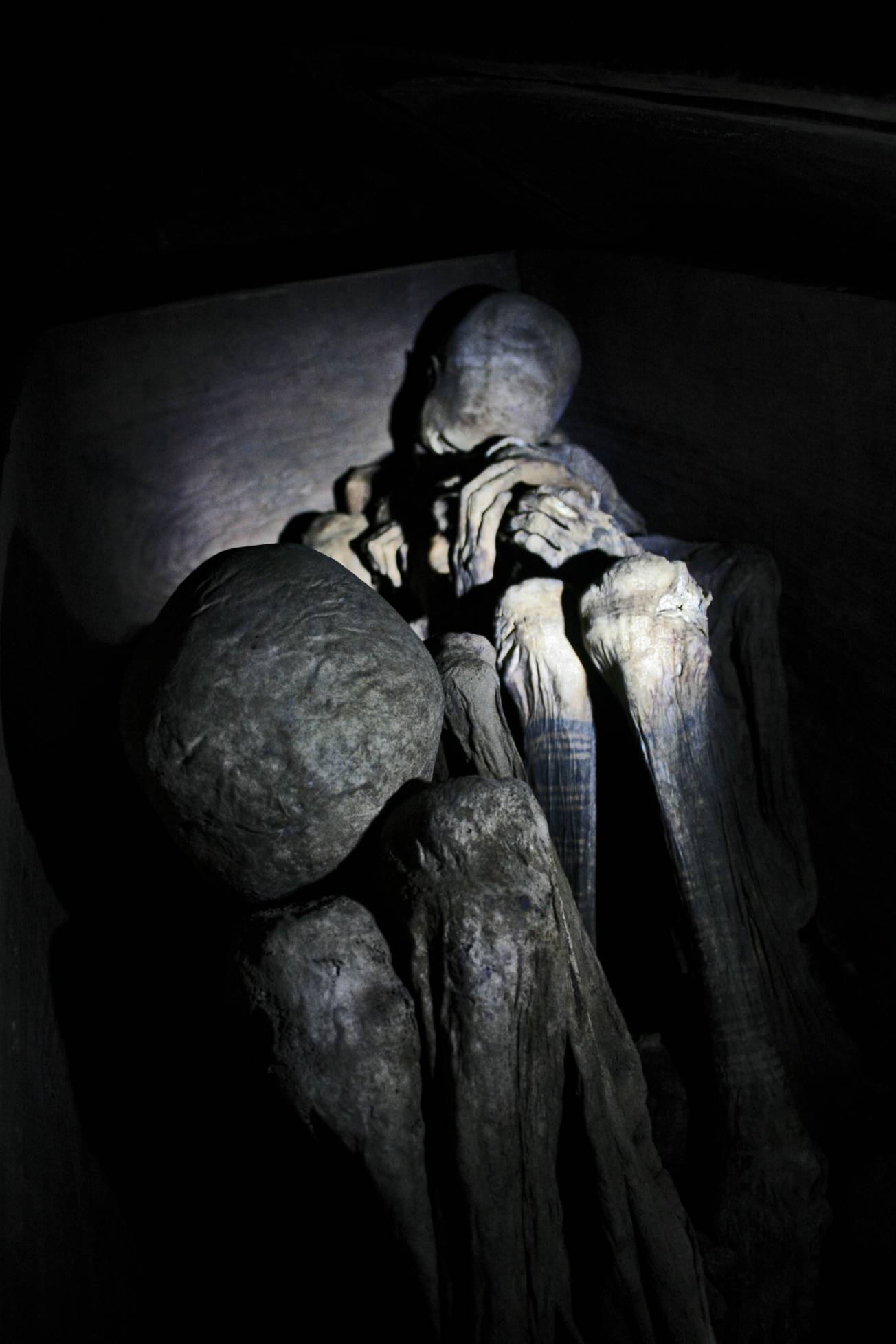Deep within the mysterious darkness of the Kabayan Caves, an enigmatic secret lies hidden, waiting to be unraveled by the intrepid souls who dare to venture into its ancient corridors. It is a secret that evokes a sense of both awe and dread, for within these dark recesses lay the burnt human mummies, silent witnesses to a forgotten time. Shrouded in mystery and obscured by the passage of centuries, these eerie specimens have captivated the imagination of scientists, anthropologists, as well as thrill-seekers, beckoning them to uncover the enigma that envelopes their existence. What arcane rituals, burial practices, or ancient beliefs could have led to the creation of these macabre relics?
The Fire Mummies

The Fire Mummies, also known as the Ibaloi Mummies, Benguet Mummies, and Kabayan mummies, are a fascinating archaeological discovery made in several caves near the town of Kabayan, in the Benguet province of the Philippines. Notable among these caves are Timbac, Bangao, Tenongchol, Naapay, and Opdas. These caves served as sacred burial grounds for the ancient Ibaloi people and housed the remains of their deceased ancestors.
The discovery of the Fire Mummies in the early 20th century fascinated Westerners, even though the local communities had known about them for hundreds of years. Unfortunately, the lack of protection in the caves led to many of the mummies being stolen. This prompted Monument Watch, a nonprofit organization, to declare the site as one of the 100 most endangered sites in the world.
The fire mummification process: When did it all start?
Scientists believe that the Fire Mummies were created by the Ibaloi tribe between 1,200 and 1,500 CE in five towns in Benguet. However, there are others who argue that the process of mummification began much earlier, around 2,000 BCE. What makes the Fire Mummies unique is their intricate mummification process.
Rather than mummifying the body after death, the process began shortly before a person passed away. They would drink something with a highly saline solution, which would aid in the dehydration process. After death, the body was washed and placed over a fire in a seated position, allowing the fluids to dry. Tobacco smoke was then blown into the mouth to further dry the body’s internal organs. Finally, herbs were rubbed into the body before it was placed in a pinewood coffin and laid to rest in caves or other burial sites.
Lootings and vandalism
Over time, the location of many of these caves became known due to intensified logging operations in the area. Unfortunately, this led to looting as some visitors were eager to leave their mark on the Kabayan mummies, including graffiti. One notable mummy, Apo Annu, was stolen in the early 1900s and later returned to the Ibaloi tribe due to belief in his supernatural powers.
Efforts to preserve the Kabayan history

In 1998, the Kabayan Mummies were listed on the World Monuments Watch by the World Monuments Fund. To combat this issue, funding was secured through American Express for emergency conservation and the creation of a comprehensive management plan. Local authorities from surrounding municipalities also collaborated in a cultural awareness campaign to introduce the mummies to Filipinos. Tourist facilities were constructed to control visitation and prevent harmful intrusions.
Despite these efforts, the Fire Mummies remain at risk due to the relatively small security in their natural caves. Even though officials know the locations of 50-80 other mummies, they refuse to disclose them out of fear of further vandalism. To raise awareness and provide access to these historical treasures, a small museum in Kabayan, Benguet displays a few mummies.
The Kabayan Mummy Burial Caves: A World Heritage Site

The Kabayan Mummy Burial Caves are recognized as National Cultural Treasures by the National Museum of the Philippines under Presidential Decree No. 374. Additionally, they are currently under consideration as a UNESCO World Heritage Site. The hope is that by designating the caves as protected sites, the mummies can be safeguarded against further theft and vandalism.
Final words
The mummification process of the Kabayan tribe in the Philippines, known as fire mummification, is a testament to the creativity and meticulousness of their burial practices. Exploring the caves containing the Kabayan mummies is a captivating experience that combines history, archaeology, and spirituality. Visitors can marvel at the meticulous mummification techniques employed by the Ibaloi people centuries ago.
The caves themselves carry an aura of sacredness, as they were regarded as sacred spaces for the final resting place of the departed.It is important to approach these caves and the mummies with the utmost respect and reverence. They are not mere artifacts but symbols of a vibrant past that deserve to be preserved and appreciated. As visitors venture into these caves, they enter into a realm where time stands still, connecting with ancestral spirits and immersing themselves in the rich tapestry of Ibaloi culture.
After reading about the Fire Mummies, read about the strange mummies of Venzone: Ancient bodies that never decompose remain an unsolved mystery.




